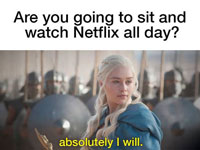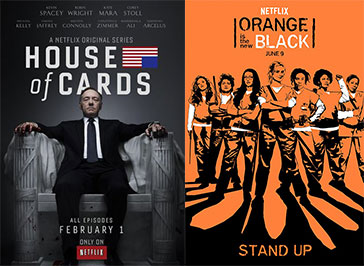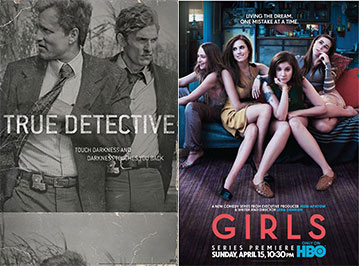 NEW YORK—As the leaves begin to turn and the pumpkin spice starts to take over, we here in the north are reminded that winter is coming. The weather is getting colder by the day and we’re beginning to restock on sweaters, boots and coats, which means, our enthusiasm to hang outdoors is slowly but surely waning. The urge to stay inside the house in fleece pajamas, accompanied by a cup of tea is becoming more attractive and naturally, we are gravitating toward our televisions and binge-watching our favorite fall shows.
NEW YORK—As the leaves begin to turn and the pumpkin spice starts to take over, we here in the north are reminded that winter is coming. The weather is getting colder by the day and we’re beginning to restock on sweaters, boots and coats, which means, our enthusiasm to hang outdoors is slowly but surely waning. The urge to stay inside the house in fleece pajamas, accompanied by a cup of tea is becoming more attractive and naturally, we are gravitating toward our televisions and binge-watching our favorite fall shows.
In 2013, Netflix released original series "House of Cards" and "Orange is the New Black." Instead of following the generic format of releasing episodes weekly, the streaming service unleashed entire seasons’ worth of episodes, allowing viewers to stream the show at their leisure. No longer did audiences have to make sure they tuned in at designated times; one could watch an episode before bed, during their lunch hour or during their commute.

However, in a survey conducted by Netflix in the same year, the streaming service found that viewers would “watch between 2 to 6 episodes of the same TV show in one sitting,” instead of pacing themselves over the course of several days or weeks. This concept is what we now know as “binge-watching.”
Binge-watching has become a cultural phenomenon, so much so that even traditional TV networks are ensuring that their regular programming is available for binge-watching. The big three television networks—CBS, ABC and NBC all have shows on various streaming services. "Criminal Minds," which has been running on CBS since 2005 is available in its entirety on Netflix; ABC’s Shondaland productions—"Grey’s Anatomy," "Scandal," "How to Get Away with Murder"—are also available on Netflix; and NBC’s "This Is Us" is available for streaming on Hulu.
Up until 2015, HBO had been offering streaming services exclusively to consumers who were subscribed to the HBO Television channels as part of their cable plans. With the expansion of the binge-watching culture, HBO leveraged the premiere of the widely popular "Game of Thrones" in the spring of 2015 and introduced HBO Now, which was aimed at the approximately “10 million broadband only homes who were unlikely to have a cable subscription,” HBO CEO Richard Plepler, told CNN. This “unbundling” of HBO from cable meant that anyone could binge-watch the network’s other widely popular series such as "Veep," "True Detective" and "Girls."

While it’s easy to get hooked on any one show, it’s also important to remember that staring at iPads, televisions and computers for too long can cause digital eye strain. According to The Vision Council, “More than 83 percent of Americans report using digital devices for more than two hours per day, and 53.1 percent report using two digital devices simultaneously, with 60.5 percent reporting experiencing symptoms of digital eye strain.”
This doesn’t bode well when we consider the fact that the average run-time of some of the most popular shows is approximately 43 minutes on television and about 57 minutes on streaming services. In addition, most people are browsing through social media, checking the news or texting with friends and family, in-between episodes and not giving their eyes enough time to rest.
Hard as it may be to peel ourselves from watching the Mother of Dragons claim her throne or Olivia Pope handle another crisis in D.C., we must try and remember to avoid eye strain. Think About Your Eyes recommends the 20-20-20 rule—taking a break every 20 minutes and focusing on something at least 20 feet away for 20 seconds—in order to alleviate eye strain and work the muscles that are not being used while watching a digital screen.
While binge-watching is mostly reserved for discussions with friends and family, it can also be a conversation starter for ECPs to talk about digital eye strain during eye exams. As patients talk about the last season of "Transparent" on Amazon Prime or their anticipation for the upcoming season of "Stranger Things" on Netflix, ECPs can bring up the importance of taking a break in-between episodes in order to avoid eye strain.